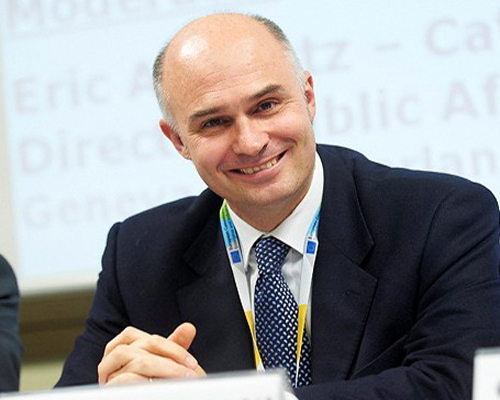Sepro is assured another record year, making 2016 the third year in a row the robot manufacturer has smashed its own benchmarks, adding further shine to its stellar K 2016 presence.
According to CEO Jean-Michel Renaudeau, a “turnover of €100 million is certain for 2016″, with sales already higher than this time last year, with a 13 per cent year-on-year revenue increase looking possible when the full year sales results are recorded.
Sepro has enjoyed a strong growth trajectory, employing over 500 personnel worldwide with daughter companies in the US, Mexico, Brazil, Germany, UK, Spain, Benelux and China, and 40 distributors or brand-representatives.
In 2017 this roster of daughter companies will include Sepro Switzerland, while Sepro’s German facility in Dietzenbach is to undergo a 150 m sq expansion, while in the US, Sepro America will begin manufacturing beams and other components locally and begin assembling Made in US robots.
Sepro exports 85 per cent of its robots outside of France and a third outside Europe. The company has built a network of 10 direct sales organizations around the world, adding offices in Canada and the Austria/Hungary region in 2016. The launch in Austria and Hungary, in particular, has been such a success that Sepro has already expanded the staff there to include a dedicated technician.
Renaudeau attributes his company’s success to three key factors: global presence and global service for the key accounts, product innovation, and a clear brand strategy that includes technological alliances with injection moulding machine manufacturers and other automation companies.
After the K 2016 debut of new robots for moulding machines up to 5000 tonnes, including the 7X-100XL 5-axis Cartesian robot and the 6X-400 6-axis articulated-arm robot, product innovations will continue in the second quarter 2017 with the official launch of new smaller units.
These include Success 5, the smallest robot in the affordable, general-purpose Success range, which is sized for machines from 30 to 180 tons, and the new Multi Inject 40, which is the third and largest robot designed for multi-material molding applications where a secondary vertical injection unit would interfere with movement of a standard beam robot. They offer the flexibility of a 3-axis Cartesian configuration and are more economical than a side-entry robot.
2017 is also expected to see the first results of collaboration between Sepro and the Robotics Institute at Carnegie Mellon University in Pittsburgh, PA. the project is aimed at developing the next generation of robot and injection moulding machine controls including features like ‘agile’ ergonomics, similar to tablets, the ability to ‘learn by doing,’ 3D simulation to make programming easier, extensive customisation, and ‘apps’ to facilitate routine functions like maintenance and troubleshooting.
The alliance with Carnegie Mellon is just one example of the partnerships Sepro Group has been developing with academic institutions, other automation companies and injection moulding machine suppliers.
The payoff from one of those alliances is evident on the Sepro stand at K 2016, where an operating 50-ton Sumitomo-Demag injection-moulding machine is equipped with a Sepro 6X-60 articulated-arm robot. The Sepro Visual 3 robot control and the IMM control are fully integrated in a real-world example of Industry 4.0.
All application data, including robot programming and possibly other auxiliary equipment like mold temperature controls, are filed in one place in the IMM control memory. Shortcut icons and keyboard functionality for operation of the Sepro robot are built into the IMM control. Application parameters for the entire cell are filed and backed up in one single archive and the operator can start up the whole production cell on one touchscreen.
Website:www.eppm.com








